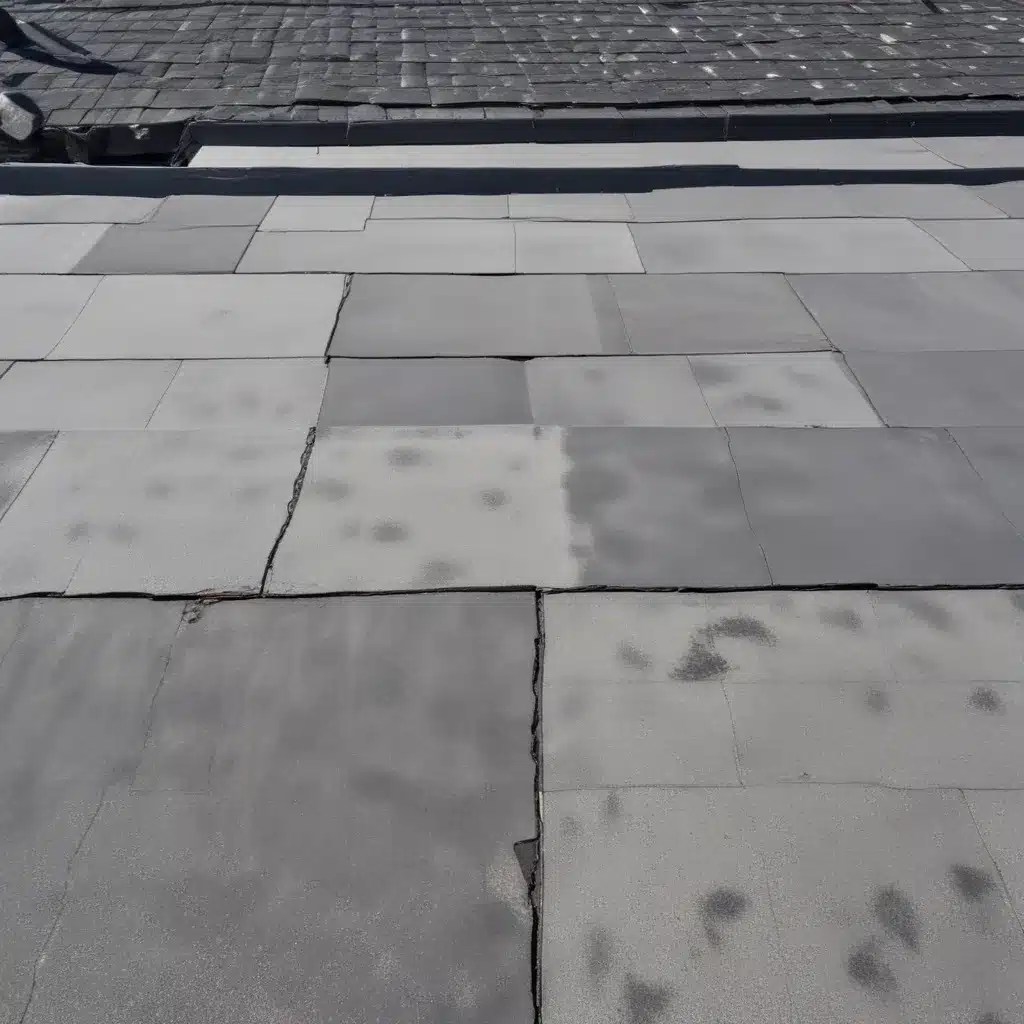
Understanding Roof Ponding and Its Implications
Roof ponding, the accumulation of standing water on a roof’s surface, can pose significant challenges for building owners and roofing professionals, even on steep-pitched roofs. While steep-pitched roofs are engineered to facilitate efficient water drainage, various factors can still contribute to water ponding, leading to a range of issues if left unaddressed.
Water ponding on a roof refers to the collection of water or puddles that remain on the roof surface following rainfall or improper drainage. This occurs when the roof lacks sufficient slope or experiences structural problems that prevent water from draining properly. Prolonged ponding can lead to a host of problems, including:
- Leakage: The standing water can seep through the roof membrane or roofing materials, causing leaks into the building.
- Structural Damage: The weight of the accumulated water can stress the roof structure, potentially leading to long-term damage.
- Deterioration: Prolonged exposure to standing water can degrade roofing materials, reducing their lifespan and effectiveness.
- Mold and Mildew: Moisture accumulation provides an ideal breeding ground for mold and mildew, which can impact indoor air quality and pose health risks.
Why Does Water Pond on Steep-Pitched Roofs?
While steep-pitched roofs are designed to facilitate efficient water drainage, the occurrence of water ponding, although uncommon, can still happen due to a variety of factors:
Obstructions
Debris, such as leaves, branches, or other materials, can accumulate on the roof and hinder the natural flow of water, creating pockets where water collects.
Damaged or Inadequate Drainage
If the roof’s drainage system, including gutters, downspouts, or roof drains, is compromised or insufficient, water may pool in certain areas instead of being effectively channeled away.
Irregularities in Roof Construction
Minor design flaws, improper installation, or irregularities in the roof’s construction can create low spots or uneven surfaces where water tends to gather.
Ice Dams
In colder climates, the formation of ice dams on steep-pitched roofs can block the natural flow of melting snow, leading to water ponding.
Understanding the potential causes of water ponding is crucial for addressing the issue and preventing further damage to the roof and the building.
Mitigating Roof Ponding on Steep-Pitched Roofs
Effectively managing roof ponding on steep-pitched roofs involves a multi-pronged approach, including preventive measures and regular maintenance. Here are some key strategies to mitigate the risks of water ponding:
Ensure Proper Roof Design
When constructing a new roof or replacing an existing one, it’s essential to design the roof with the appropriate slope and angles to facilitate efficient water drainage. A minimum slope of 1/4 inch per foot is generally recommended for steep-pitched roofs.
Inspect and Clear Debris
Regularly inspect the roof for any debris, such as leaves, branches, or other materials, that could obstruct water flow. Promptly remove any accumulated debris to maintain proper drainage.
Maintain Gutters and Downspouts
Keep the gutters and downspouts free from debris and ensure they are correctly positioned to effectively channel water away from the roof.
Address Structural Issues
Inspect the roof for any structural settling or damage that may have altered the intended slope. Address these issues to restore the roof’s proper pitch and water drainage capabilities.
Install Roof Features
Consider incorporating additional features, such as roof vents or ridges, to enhance ventilation and improve airflow, reducing the likelihood of moisture accumulation.
Prevent Ice Dams
In colder climates, take proactive measures to prevent ice dam formation, such as ensuring proper insulation and ventilation in the attic. This can help prevent melting snow from refreezing at the roof’s edge and causing ponding.
Conduct Regular Inspections
Periodically hire a professional roofing contractor to thoroughly inspect the roof for any signs of ponding or other issues. They can provide expert guidance on necessary repairs or maintenance.
By implementing these strategies, building owners and roofing professionals can effectively mitigate the risks of water ponding on steep-pitched roofs, safeguarding the roof’s integrity and preventing potential damage.
The Importance of Addressing Roof Ponding
Addressing water ponding on a steep-pitched roof is crucial for maintaining the roof’s functionality and longevity. Neglecting the issue can lead to a range of problems, including:
-
Leaks: Prolonged standing water can compromise the roof’s waterproofing, allowing moisture to seep through and cause leaks, potentially leading to damage within the building.
-
Structural Deterioration: The weight of the accumulated water can stress the roof’s structure, potentially causing long-term structural issues if left unaddressed.
-
Material Degradation: Continuous exposure to ponding water can degrade the roofing materials, reducing their effectiveness and shortening the roof’s lifespan.
-
Health Concerns: Moisture accumulation can create an ideal environment for the growth of mold and mildew, which can negatively impact indoor air quality and pose health risks to occupants.
By promptly identifying and addressing roof ponding, building owners and roofing professionals can avoid these costly and potentially hazardous consequences, ensuring the roof’s optimal performance and protecting the building’s overall integrity.
Conclusion
Roof ponding, even on steep-pitched roofs, is a critical issue that requires proactive attention and effective mitigation strategies. By understanding the causes of water pooling, implementing preventive measures, and conducting regular maintenance, building owners and roofing professionals can safeguard their roofs, extend their lifespan, and protect the building’s overall wellbeing.
Remember, addressing roof ponding promptly is crucial. Consult with a professional roofing contractor to ensure the long-term health and functionality of your steep-pitched roof, and take the necessary steps to identify and resolve any water retention issues before they escalate into larger problems.

